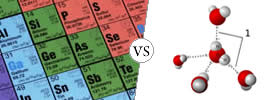Difference between Seals and Sea Lions
Key difference: “Seals” is actually a generalized name for all pinnipeds. Pinnipeds are a widely distributed and diverse group of fin-footed semiaquatic marine mammals. Pinnipeds are further distributed into the Odobenidae family, which is the walrus; the Otariidae family, which includes eared seals, sea lions, and fur seals; and the Phocidae family, which is the earless seals. Hence, it can be said that sea lions are part of the seal family. Seals are typically known for their sleek and sleek-bodied bodies with short, wide, flat flippers. Sea lions have large hairless front flippers which they use as oars to swim. Sea lions, eared seals and fur seals all have external ear flaps.
 “Seals” is actually a generalized name for all pinnipeds. Pinnipeds are a widely distributed and diverse group of fin-footed semiaquatic marine mammals. Pinnipeds are further distributed into the Odobenidae family, which is the walrus; the Otariidae family, which includes eared seals, sea lions, and fur seals; and the Phocidae family, which is the earless seals. Each of these families is further distributed into sub-families and species.
“Seals” is actually a generalized name for all pinnipeds. Pinnipeds are a widely distributed and diverse group of fin-footed semiaquatic marine mammals. Pinnipeds are further distributed into the Odobenidae family, which is the walrus; the Otariidae family, which includes eared seals, sea lions, and fur seals; and the Phocidae family, which is the earless seals. Each of these families is further distributed into sub-families and species.
Hence, it can be said that sea lions are part of the seal family. This makes it hard to differentiate between seals and sea lions as they are remarkably similar. In fact, they almost look identical from afar. However, there are some differences that can help identify these two.
Seals are typically known for their sleek and sleek-bodied bodies with short, wide, flat flippers. Their bodies are well adapted to the aquatic habitat, as they tend to spend most of their lives in water; only coming out on to rocks, ledges and the beach to sun bathe. Seals have thick skin with blubber underneath; however fur seals have both blubber and a specially adapted fur coat. The fur coat includes outer guard hairs that repel water and a layer of insulating underfur.
Sea lions, together with eared seals and fur seals are classified as otariids. Similar to other seals, sea lions are fin-footed semiaquatic marine mammals. Sea lions are much more closely related to the eared seals and fur seals than the true seals. Sea lions, eared seals and fur seals all have external ear flaps.
Sea lions have large hairless front flippers which they use as oars to swim. They use their rear flippers as a rudder to navigate. They are also able to bring all four flippers underneath their bodies in order to walk on land. However, fur seals have longer flippers and thicker coats than sea lions.
 Unlike sea lions, seals use the hind to gain thrust and propel themselves forward. They use their short, hairy fore flippers to navigate. However, unlike sea lions, seals are not capable of turning their hind flippers forward in order to be able to walk on land. Hence, on land, they are less mobile than sea lions.
Unlike sea lions, seals use the hind to gain thrust and propel themselves forward. They use their short, hairy fore flippers to navigate. However, unlike sea lions, seals are not capable of turning their hind flippers forward in order to be able to walk on land. Hence, on land, they are less mobile than sea lions.
Another difference between the two is that sea lions possess a rather harsh coat while seals have a dense soft undercoat of fur. This undercoat is protected by coarse guard hairs. The fine hairs are short and slick and provide warmth.
Furthermore, seals are less social than sea lions. They are also quieter compared to sea lions and use soft grunts to communicate with each other. Sea lions, on the other hand, are loud and noisy, often barking to communicate. Seals also lead solitary lives in the wild and only come ashore together once a year to mate. Sea lion often live in groups of up to 1,500 called herds or rafts. These herds are often seen sun basking together on beaches or rocks.
A detailed comparison between seals and sea lions:
|
|
Seal |
Sea Lion |
|
Scientific classification |
Animalia – Chordata – Vertebrata – Mammalia – Carnivora – Caniformia – Pinnipedia |
Animalia – Chordata – Vertebrata – Mammalia – Carnivora – Caniformia – Pinnipedia – Otariidae – Otariinae |
|
Species |
Pinnipeds, also known as fin-footed mammals are often generalized as seals. Pinnipeds include the walrus, eared seals, sea lions, fur seals and earless seals. |
Pinnipeds, also known as fin-footed mammals are often generalized as seals. Sea-lions belong to the Otariidae family under Pinnipeds. |
|
Description |
Pinnipeds are typically sleek-bodied and barrel-shaped. Their bodies are well adapted to the aquatic habitat where they spend most of their lives. Their limbs consist of short, wide, flat flippers. Fur seals have both blubber and a specially adapted fur coat, including outer guard hairs that repel water and a layer of insulating underfur. For this reason they were particularly prized by sealers. Many species were nearly hunted to extinction. |
Sea lions are pinnipeds characterized by external ear flaps, long foreflippers, the ability to walk on all fours, and short, thick hair. Together with the fur seals, they comprise the family Otariidae, or eared seals. A male California sea lion weighs on an average about 300 kg (660 lb) and is about 8 ft (2.4 m) long, while the female sea lion weighs 100 kg (220 lb) and is 6 ft (1.8 m) long. The largest sea lion was the now extinct Steller's sea lion which weighed 1,000 kg (2,200 lb) and grows to a length of 10 ft (3.0 m). |
|
Blubber/fur |
True seals or earless seals have a smooth layer of blubber lies underneath the skin. They are able to divert blood flow to this layer to help control their temperatures. Fur seals have both blubber and a specially adapted fur coat, including outer guard hairs that repel water and a layer of insulating underfur. For this reason they were particularly prized by sealers. Many species were nearly hunted to extinction. |
Sea lions possess a rather harsh coat of fur. |
|
Flippers |
Seals have short, hairy fore flippers and long claws. Seals usually move by wiggling on their bellies and keeping their hind flipper straight behind them. Seals steer with their fore flippers and use their hind flippers to propel them along. |
Sea lions have long, hairless fore flippers. The hind flippers rotate underneath them to allow them to walk on land. To swim, sea lions use their fore flippers like a bird uses its wings to fly. They use their rear flippers as a rudder, to navigate. |
|
Ears |
True seals have holes as ears. Eared seals have external ear flaps. |
Sea lions have external ear flaps. |
|
Whiskers |
Seals have crimped or beaded whiskers. |
Sea lions have long, smooth whiskers, specialized hairs used for tactile sensations. |
|
Diet |
Pinnipeds are carnivorous, eating fish, shellfish, squid, penguins, and other marine creatures. Some seals eat warm-blooded prey, including other seals. |
Sea lions consume large quantities of food at a time and are known to eat about 5–8% of their body weight (about 15–35 lb (6.8–16 kg)) at a single feeding. The feed on squid, octopus, birds and fish. |
|
Age |
15 to 40 years depending on the species |
Average life span of 20–30 Years |
|
Gestation |
About 9 to 12 months depending on the species |
About 9 to 12 months depending on whether there is a delayed implantation. |
|
Reproduction |
Males of some species aggressively defend groups of specific females, referred to as harems. Males of other species defend territories on reproductive rookeries while females move freely between them. After the female returns from her first feeding trip, the most important task for her is to find her own pup out of the mass of other pups. Feeding a different mother's pup is a significant waste of energy, as milk production has a high parental cost. The seal overcomes this complication by voice recognition. The mother and pup must learn each other's voices in the first few days after the pup is born, before the dam goes on her next hunt. |
Males compete for dominance. The dominant male will mate with an average of 16 females in one season. Once the egg is fertilized inside the female, she can delay implantation of the egg for up to 3 months to stop the embryo from growing. After the female returns from her first feeding trip, the most important task for her is to find her own pup out of the mass of other pups. Feeding a different mother's pup is a significant waste of energy, as milk production has a high parental cost. The seal overcomes this complication by voice recognition. The mother and pup must learn each other's voices in the first few days after the pup is born, before the dam goes on her next hunt. |
|
Personality |
Seals are quieter, vocalizing via soft grunts. Less social than sea lions, spend more time in the water and often lead solitary lives in the wild, coming ashore together only once a year to meet and mate. |
Sea lions are loud and noisy. Sea lions congregate in gregarious groups called herds or rafts that can reach upwards of 1,500 individuals. They all come ashore together and sun bask. |
Image Courtesy: conservancy.co.uk, odt.co.nz









Add new comment